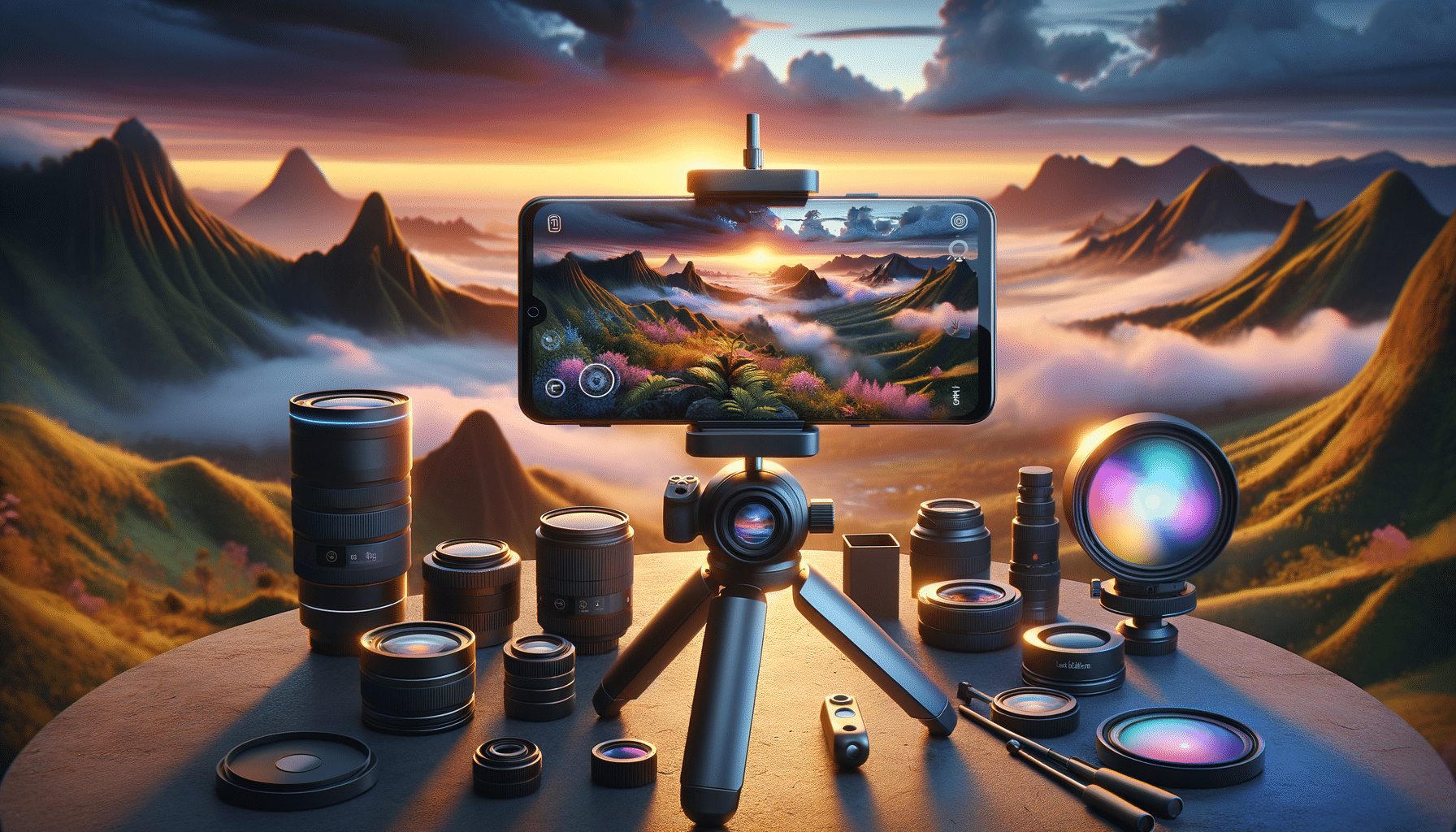Master Mobile Photography: Capture Stunning Shots on Your Phone
Unlock pro-level photography skills using just your smartphone. Our guide shares simple tips to help you capture vibrant, share-worthy images anytime, anywhere.

Understanding Your Smartphone Camera
Smartphone cameras have evolved significantly over the years, becoming powerful tools capable of capturing high-quality images. Understanding the features and settings of your smartphone camera is the first step towards mastering mobile photography. Most smartphones today come equipped with multiple lenses, such as wide-angle, telephoto, and macro, each serving a specific purpose. For instance, wide-angle lenses are perfect for capturing landscapes, while telephoto lenses are ideal for portraits.
Moreover, smartphone cameras often include advanced features like optical image stabilization, which helps reduce blur in photos, and high dynamic range (HDR), which improves image quality by balancing light and shadow. Familiarizing yourself with these features can enhance your photography skills significantly. Additionally, many smartphones offer manual settings that allow you to control aspects such as ISO, shutter speed, and focus. Experimenting with these settings can lead to creative and unique photographs.
Understanding your smartphone camera’s capabilities and limitations is crucial. While they are highly versatile, smartphone cameras may struggle in low-light conditions compared to professional cameras. However, with the right techniques and understanding, you can still capture stunning images in various environments.
Lighting: The Key to Great Mobile Photos
Lighting plays a pivotal role in photography, and mobile photography is no exception. Natural light is often the best option for capturing vibrant and true-to-life images. Early morning or late afternoon, commonly referred to as the “golden hour,” provides soft, warm lighting that enhances the subject’s appearance.
When shooting indoors or in low-light conditions, consider using available light sources creatively. Position your subject near windows or use lamps to create interesting lighting effects. Many smartphones also have a built-in flash, but it’s best used sparingly, as it can create harsh shadows and unnatural colors.
To make the most of lighting, try to avoid direct sunlight, which can cause overexposure and harsh shadows. Instead, look for shaded areas or use diffusers to soften the light. Understanding how to work with different lighting conditions will greatly improve the quality of your mobile photography.
Composition Techniques for Mobile Photography
Composition is a fundamental aspect of photography, and mastering it can elevate your mobile photos from ordinary to extraordinary. One of the most common composition techniques is the rule of thirds. By dividing your frame into a grid of nine equal parts, you can place your subject along the lines or at the intersections to create a balanced and visually appealing image.
Leading lines are another effective composition tool. These are lines within the image that guide the viewer’s eye towards the subject. They can be anything from roads and paths to architectural features. Using leading lines can add depth and dimension to your photos.
Additionally, consider experimenting with perspectives and angles. Shooting from a low angle can make your subject appear larger and more dramatic, while a high angle can provide a unique viewpoint. Don’t be afraid to get creative and try new things. Understanding and applying these composition techniques will make your mobile photography more engaging and dynamic.
Editing Your Mobile Photos
Editing is an essential part of the photography process, allowing you to enhance and refine your images. With the plethora of editing apps available for smartphones, you have a wide range of tools at your disposal. Popular apps offer features such as cropping, adjusting brightness and contrast, and applying filters.
When editing, it’s important to maintain a natural look. Over-editing can lead to unnatural colors and loss of detail. Start by making subtle adjustments to improve the image’s overall appearance. Cropping can help focus on the subject, while adjusting brightness and contrast can enhance details.
Filters can add a creative touch to your photos, but use them sparingly. It’s often best to stick to one or two filters that complement your style. Additionally, many apps offer advanced features like selective editing, allowing you to adjust specific areas of the image. By mastering these editing techniques, you can transform your mobile photos into professional-quality images.
Sharing and Storing Your Mobile Photography
Once you’ve captured and edited your stunning mobile photos, sharing them with the world is the next step. Social media platforms are a popular choice for sharing photography, offering a platform to showcase your work and connect with other photography enthusiasts. Consider using hashtags related to photography to increase the visibility of your images.
In addition to sharing, it’s important to store your photos securely. Cloud storage services provide a reliable way to back up your images and free up space on your device. Many services offer automatic backups, ensuring your photos are safe and accessible from any device.
Organizing your photos into albums or collections can make it easier to find specific images later. Consider creating folders based on themes, events, or dates. By effectively sharing and storing your mobile photography, you can ensure your images are both appreciated and preserved for the future.